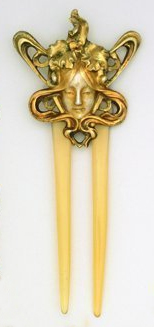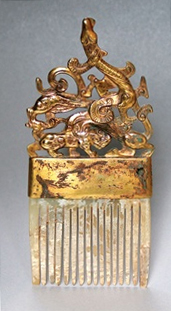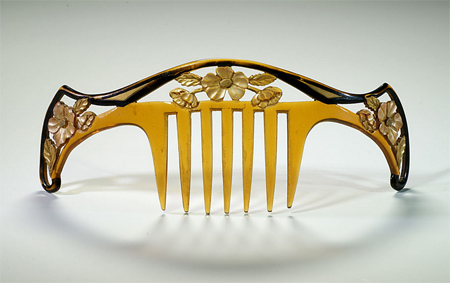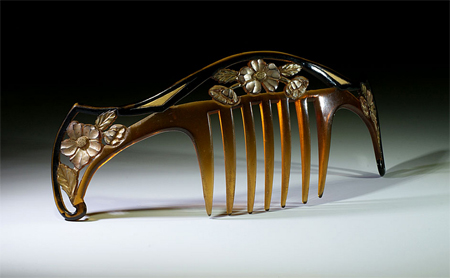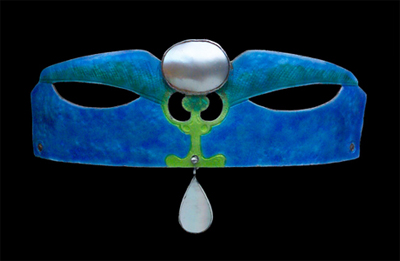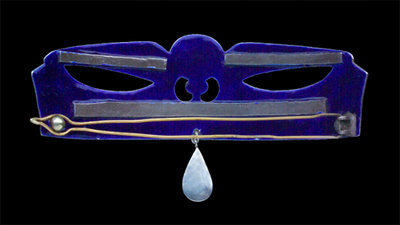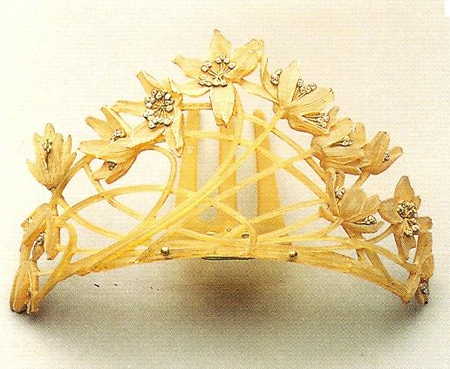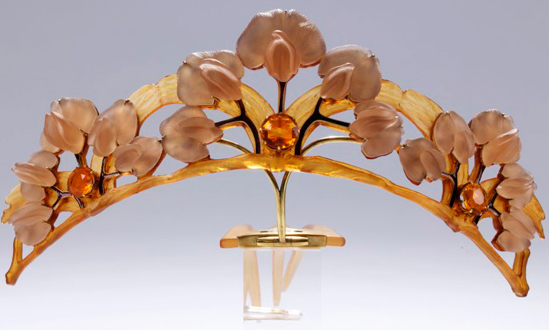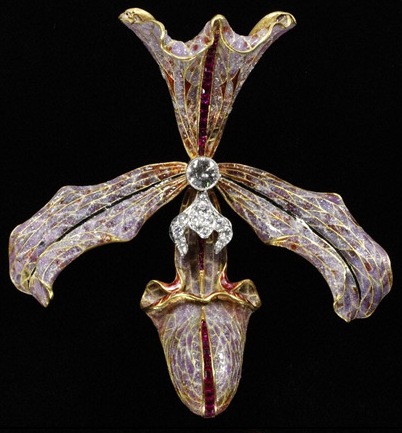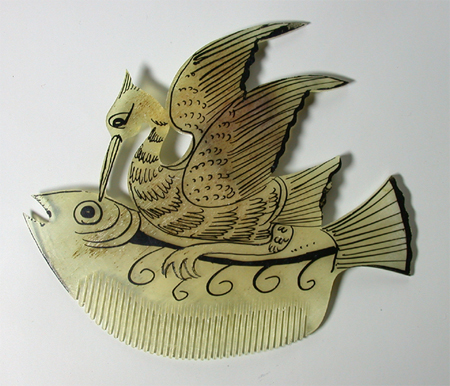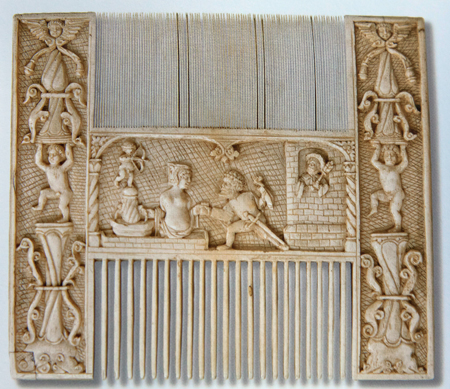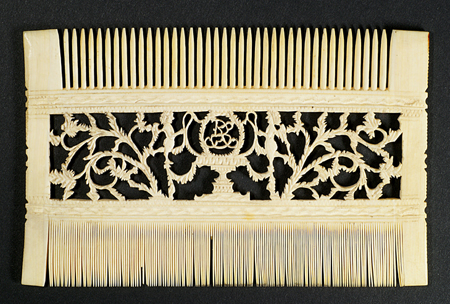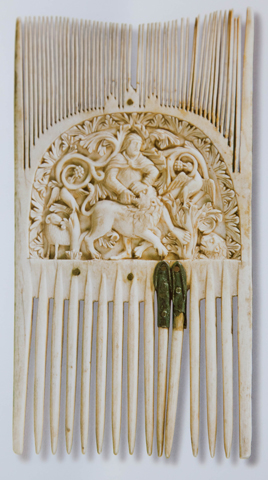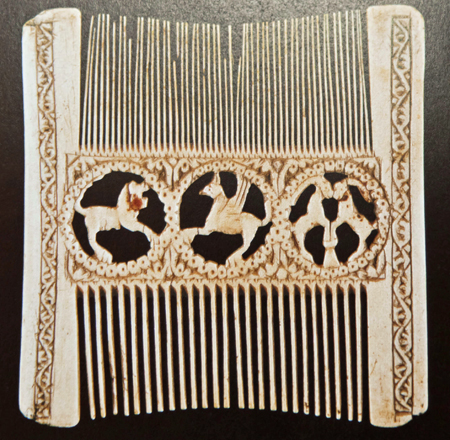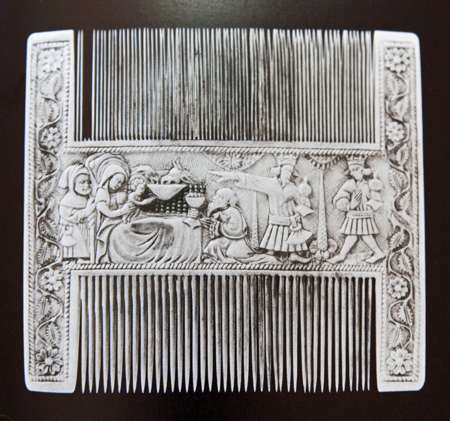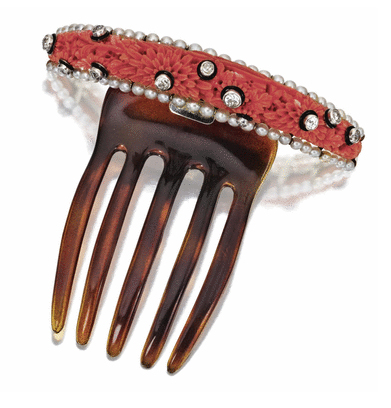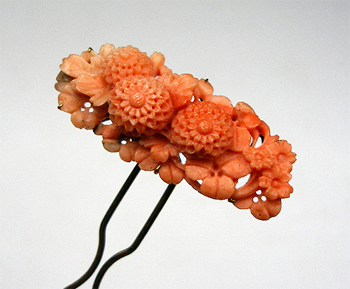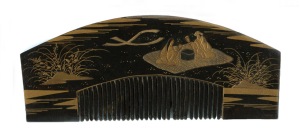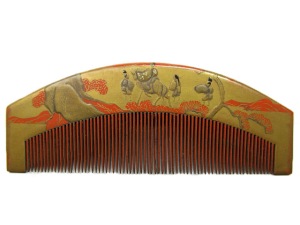Different fittings can attach to many extraordinary pieces of jewelry. For example, a brooch could become a hair ornament, quite easily. Lalique made this corsage into a breathtaking fairy tale of 18K gold, diamond leaves, mother-of-pearl flowers, and green enamel. It is on display at the Musée Lalique, located on the Rue du Hochberg in Alsace, France.
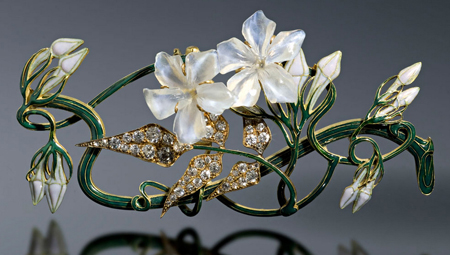
The Musée Lalique also displays a life-sized picture of L’Exposition Universelle de 1900, one of the places René saw the combs of Edo Japan.
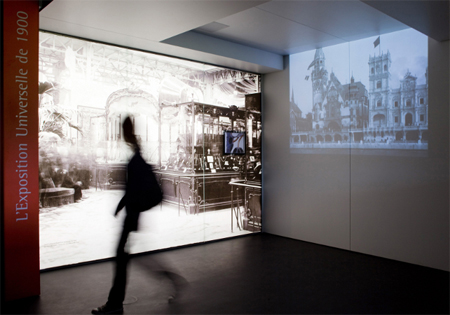
There is Lalique Museum in Hakone, Japan, where we first saw Metamorphosis in 2009. But I am so happy a new one was built in France.
कंघी
For more scholarly research, please examine

